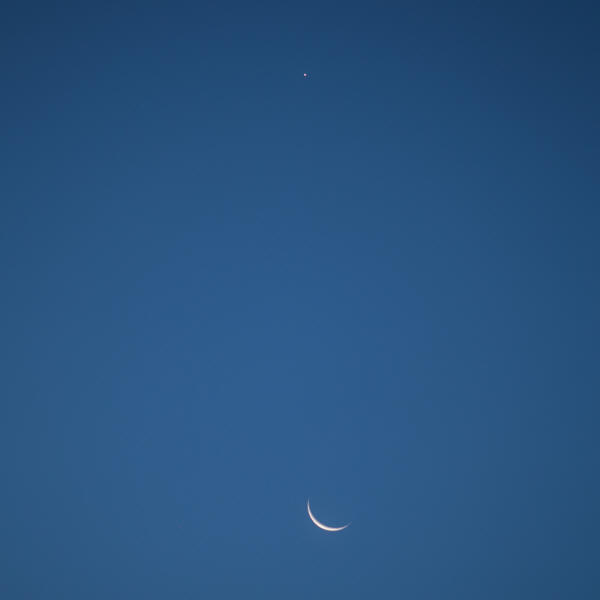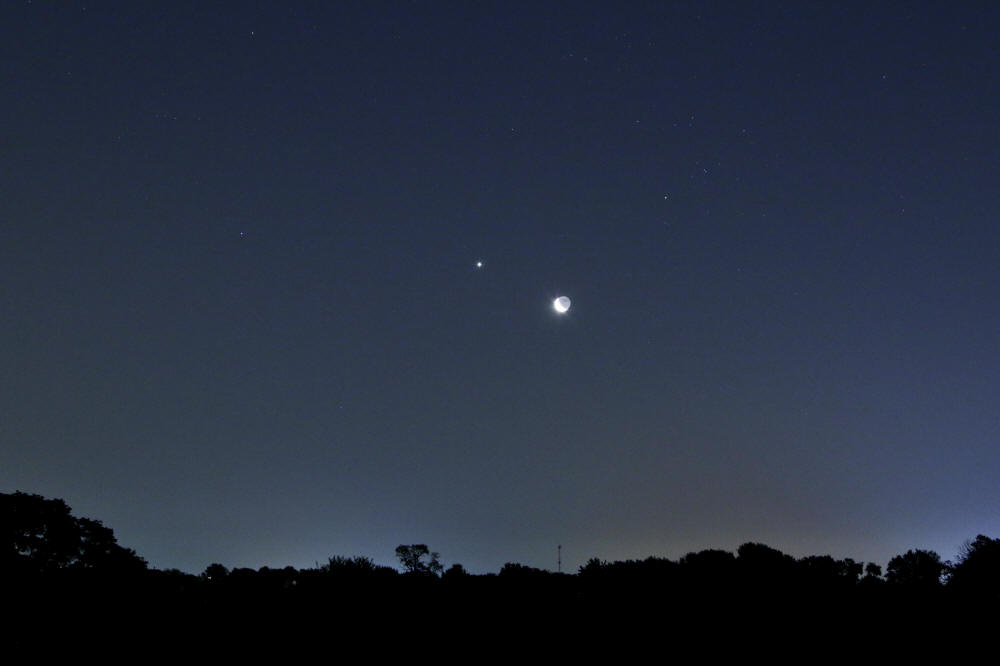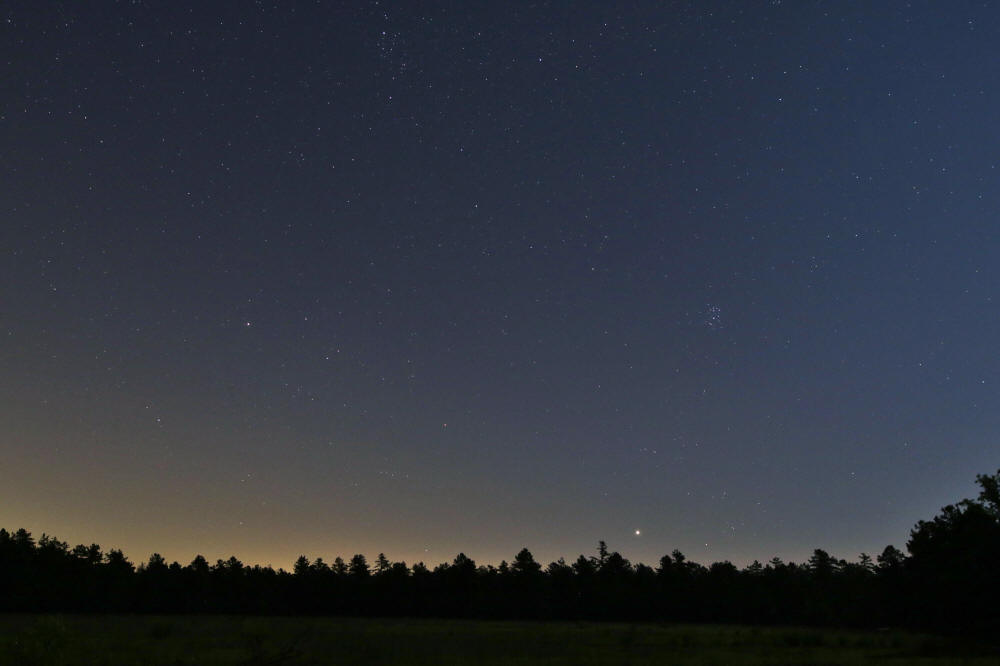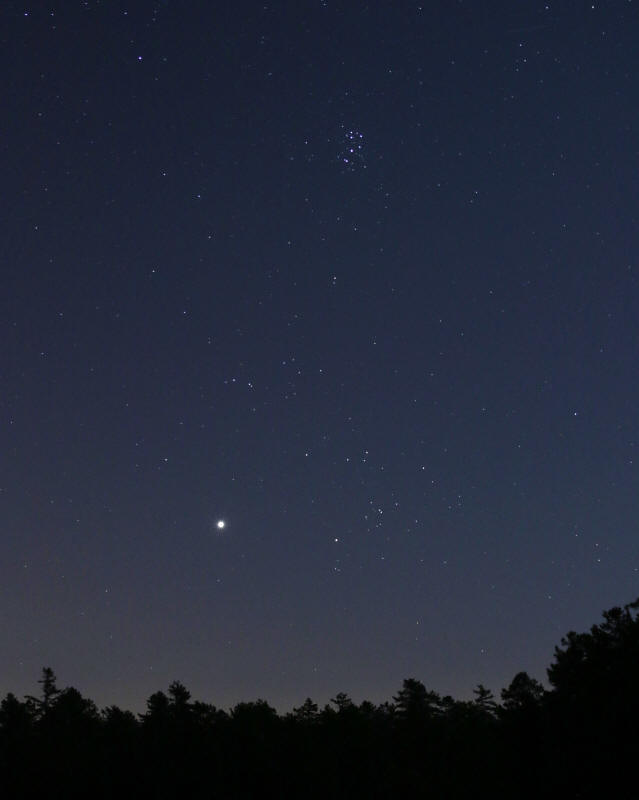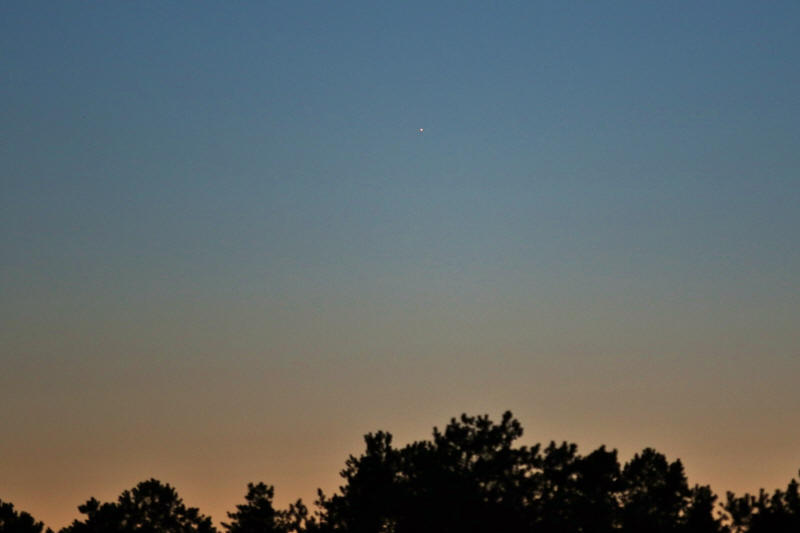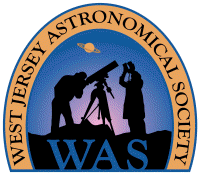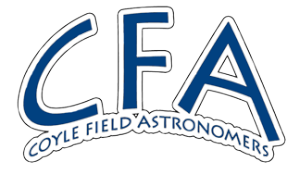Venus and the Crescent Moon
August 19, 2017
On August 19, 2017, the crescent Moon, about 7% illuminated, was at 22.6° altitude and 4.7° below the bright planet Venus when this picture of them was captured at 5:56 am EDT, 20 minutes before sunrise in Maple Shade, NJ. At the time, the Moon was 56 hr 34 minutes before New Moon at 2:30 pm on August 21 during the eclipse of the Sun. Tomorrow morning, the even thinner Crescent Moon, 2.5% illuminated, will be 33 hr from new at 5:30 am, 39 minutes after it rises at 4:51 am for a nominal location of 40°N, 75°W, presenting the last chance to see the Moon (without using extraordinary measures) before the eclipse. This picture was taken with a Canon 6D digital SLR camera and a Canon 200 mm f/2.8L lens on a fixed tripod. It was exposed 1/200 second at f/2.8, ISO 800, daylight white balance (cropped lightly).
Sunrise at the Mart
August 6, 2017
I was back at the old Mart site in Pennsauken, NJ, again on August 6, 2017, to try and spot the bright star Sirius rising just ahead of the sun. On this morning, Sirius rose at 5:41 am EDT (112° azimuth) while the sun rose at 6:03 am (67° azimuth) for this location 1.8 miles southwest of the exact intersection of 40°N & 75°W (which is on the golf course of the Riverton Country Club in Cinnaminson, NJ). Alas, I was foiled again by clouds along the horizon in the direction of interest, which is the area above the tree tops just left of, and extending into, the taller pair of power transmission towers at the right edge of the frame (they are about 800 ft away at 116° azimuth from my observing spot). This picture was taken at 6:09 am with an Apple iPhone 5s having a nominal 4 mm focal length. It was exposed 1/199 seconds at f/2.2, ISO 32. This was 6 minutes after sunrise when the sun was at 68° azimuth and 45 arc minutes apparent altitude (corrected for atmospheric refraction), so the upper limb of the sun, which defines the point of sunrise, would be 61 arc minutes, or essentially one degree altitude.
It's a continuation of my annual Heliacal Rising of Sirius project that I attempt in early August. Last year, 2016, I picked up Sirius with the 16x70s on August 4 at 6:03 am, 15 minutes after it rose and 1 minute after sunrise, then saw it with unaided eyes on August 13. This year, 2017, I abandoned the search after August 15 since I was already past last year's dates. Even though I got an early start on August 1, persistent clouds along the eastern horizon, even when the bulk of the sky is clear, foiled my efforts. Update August 20: While taking pictures of the old crescent Moon at Carranza Field, I was able to spot Sirius at 5:27 am with unaided eyes at 7° altitude (the tree line in that direction was a bit higher).
As suggested by the freshly turned soil in the foreground, the old Mart site is finally being developed after many years in limbo following the original aborted attempt to do so. It has been a workhorse for me as it affords a particularly low eastern horizon overlooking a vast empty space created by the demolition of the old Mart, and beyond it, the depressed Pennsauken Creek valley on the other side of Route 73 that runs along it. I fear development will ruin the view and/or inhibit access. It has been an excellent location for catching objects before sunrise, such as old moons, planets after solar conjunction, the heliacal rising of Sirius, etc., and it will be difficult to find another site with such a good eastern horizon that's so conveniently located. Here are a few more pictures from other mornings this month.
Venus and the Crescent Moon
July 20, 2017
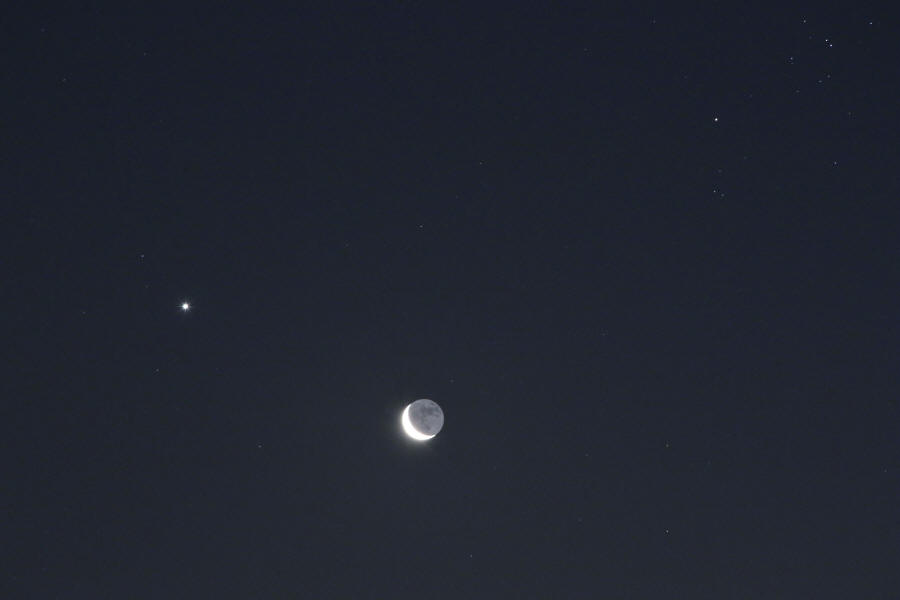
Brilliant Venus (left) was joined by the Crescent Moon on the morning of July 20, 2017, along with the bright star Aldebaran (upper right). The challenging unaided-eye double star in the Hyades, Theta 1 & 2 Tauri, is also visible above-right of Aldebaran. This picture of them was captured in a hazy sky at 4:15 am EDT (UT-4), 18 minutes after the start of astronomical twilight, from Swede Run Fields in Moorestown, NJ. At the time, the moon was 13% illuminated, 12.4° altitude and 3.7° from Venus. Taken with a Canon 7D Mark II digital SLR camera (on a fixed tripod) and a Canon 24 to 105 mm f/4L zoom lens set to 105 mm focal length, providing an uncropped field 12.2° wide x 8.2° high. Exposed 2.5 seconds at f/5.6, ISO 1600, with tungsten white balance. Venus and the moon would be at formal geocentric conjunction in right ascension at 7:12 am, 2.73° apart, and the appulse (closest apparent approach) for this location, nominally 40°N-75°W, would be at 7:53 am, 3.21° apart.
The picture below is a wider view taken at 4:12 am with the same equipment, except the lens was set to 32 mm focal length (for an uncropped field about 39° wide x 26° high). Exposed 4 seconds at f/5.6, ISO 1600. The Hyades star cluster is now visible above and right of Aldebaran (Alpha Tauri), while the western (right) side of Auriga's pentagon is visible to the left of Venus, specifically, Hassaleh (Iota Aurigae) and Alnath (Beta Tauri). Mouseover for labels.
Venus in Taurus – with Moonglow
July 16, 2017
The brilliant planet Venus was at 4.8° altitude in the constellation Taurus on July 16, 2017, when this picture of it was captured at 3:23 am EDT, 30 minutes after Venus rose, from Carranza Field in Wharton State Forest, NJ. Besides Venus, two distinct star clusters are present, the dipper-shaped Pleiades (Messier 45) above-right of Venus and the V-shaped Hyades to the right of Venus, with its first-magnitude star, Aldebaran. The pentagonal stick figure of the constellation Auriga is above the tree tops on the left, and Perseus is at the top-middle. Mouseover for labels. The nearly third-quarter moon was also in the sky, about 55° above-right of Venus, out of the frame, but lunar sky glow is visible on the right side of the frame. The yellowish glow to the left of the frame is light pollution from Toms River. Taken with a Canon 7D Mark II digital SLR camera (on a fixed tripod) and a Sigma 20 mm f/1.4 Art lens, providing an uncropped field about 59° wide x 41° high. Exposed 2.5 seconds at f/2.0, ISO 1000, 4200K white balance.
The picture below is a closer view of Venus and the star clusters taken at 3:48 am EDT, the start of astronomical twilight, when Venus was at 9.2° altitude, using the same Canon 7D Mark II digital SLR camera (on a fixed tripod), but with a Sigma 18 to 50 mm f/2.8 zoom lens set to 38 mm focal length, then cropped a little in the long direction, providing a field 27° high x 22° wide. Exposed 4 seconds at f/3.5, ISO 1600, 3600K white balance. Mouseover for labels. Venus is about 14° below the Pleiades in this picture, while in the picture down the page from the morning of June 29, Venus was 9° to the right of the Pleiades.
Mercury at Carranza Field
July 9, 2017
The planet Mercury was observed at Carranza Field on July 9, 2017, the second sighting for this elongation. It was initially spotted at 8:55 pm EDT with 10x50 binoculars, picked up with unaided eyes at 9:10 pm, then lost in the tree tops around 9:20 pm. Mercury was entering the western side of the Beehive Cluster (M44), but none of the cluster's stars were visible visually in the 10x50s or in any of the pictures taken. They were just too faint to be seen against the twilight sky. This picture was captured at 9:04 pm with a Canon 7D Mark II digital SLR camera and a Canon 70 to 200 mm f/2.8L zoom lens set to 200 mm focal length, then cropped to about 87% of the original size for a field 5.6° wide x 3.8° high. It was exposed 1/100 second at f/2.8, ISO 800, with daylight white balance. At the time, Mercury was at magnitude -0.4, 5.9° altitude and 19.2° solar elongation (although the ecliptic was sloped just 35° to the horizon). Mouseover for label.
Click here for the preceding page.
Click here for an index to previous SJAstro pages.
